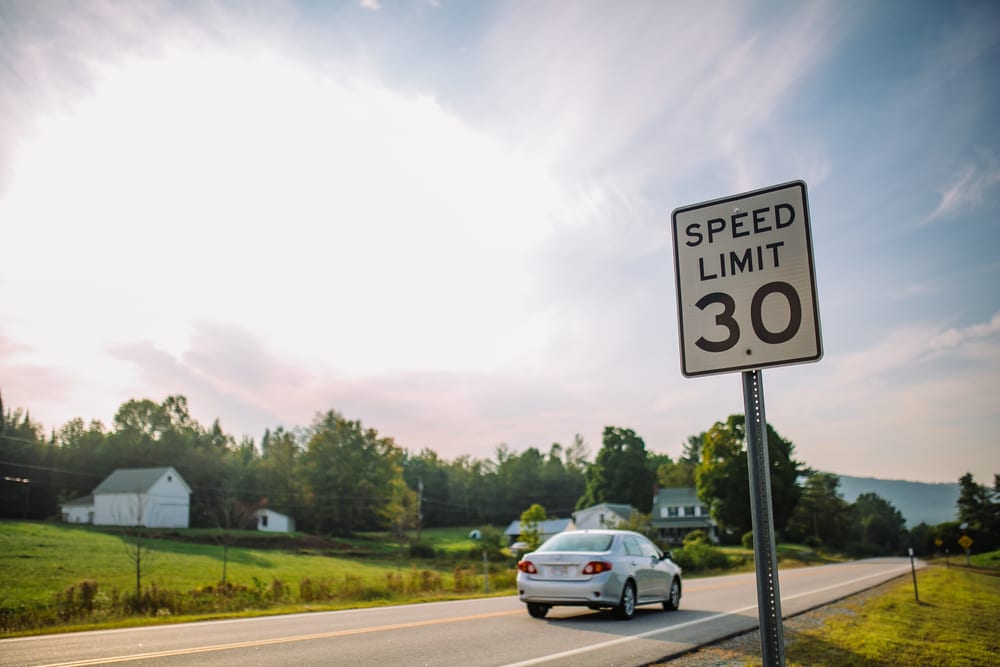

Following is an overview of the laws, limits, and fines as they relate to speeding traffic violations in the state of Minnesota.
Speed limits in Minnesota
70 mph: interstates outside of urban districts
65 mph: urban interstates, and urban freeways and highways
60 mph: some highways in the western portion of the state
55 mph: all other highways, unless posted otherwise
30 mph: urban districts and rural residential districts
10 mph: alleys
School zone speed limits may vary according to district.
Minnesota code on reasonable and prudent speed
Maximum speed law:
According to section 169.14 of Minnesota vehicle code, “No person shall drive a vehicle at a speed greater than is reasonable and prudent under the conditions.”
Driving with Due Care: “Every driver is responsible for becoming and remaining aware of the actual and potential hazards then existing on the highway and must use due care in operating a motor vehicle.”
Minimum speed law:
Sections 169.15 and 169.18(10) state:
“A person shall not operate a motor vehicle at such a slow speed as to impede or block the normal and reasonable movement of traffic.”
“A person driving at less than the normal speed of traffic shall drive in the right-hand lane then available for traffic or as close as practicable to the right-hand curb or edge of the roadway.”
Due to variations in speedometer calibration, tire size, and margins of error in speed-detecting technology, it’s uncommon for an officer to pull a driver over for going less than five miles above the speed limit. However, technically any amount over can be considered a speed violation so best practices are to stay within the limit.
Minnesota has a mix of absolute and prima facie speed limit laws. This means that in certain cases, a driver is allowed to argue their case based upon the claim that they were driving safely, despite driving above the posted speed limit. Drivers may also fight a ticket by claiming innocence based on the following arguments:
The driver may oppose the determination of speed. In order to claim this defense a driver must know how his or her speed was determined and then learn how to disprove its accuracy.
A driver may claim that an emergency situation caused the driver to break the speed limit in order to prevent injury or damage to themselves or others.
The driver may claim a case of mistaken identity. If a police officer clocks a driver speeding and subsequently has to find them again in traffic, it’s possible that they could make a mistake and pull the wrong car over.
Penalty for exceeding the speed limit in Minnesota
First-time violators may:
Be fined up to $300
Have their license suspended for up to one year
Penalty for reckless driving in Minnesota
Driving at 30 mph over the speed limit is automatically considered to be reckless driving in Minnesota.
First-time violators may:
Be fined up to $1,000
Be sentenced to up to 90 days of jail time
Have their license suspended for up to one year
Violators may be required to attend traffic school, and doing say may allow drivers to reduce their fine and/or points assessed on their driver’s license.



